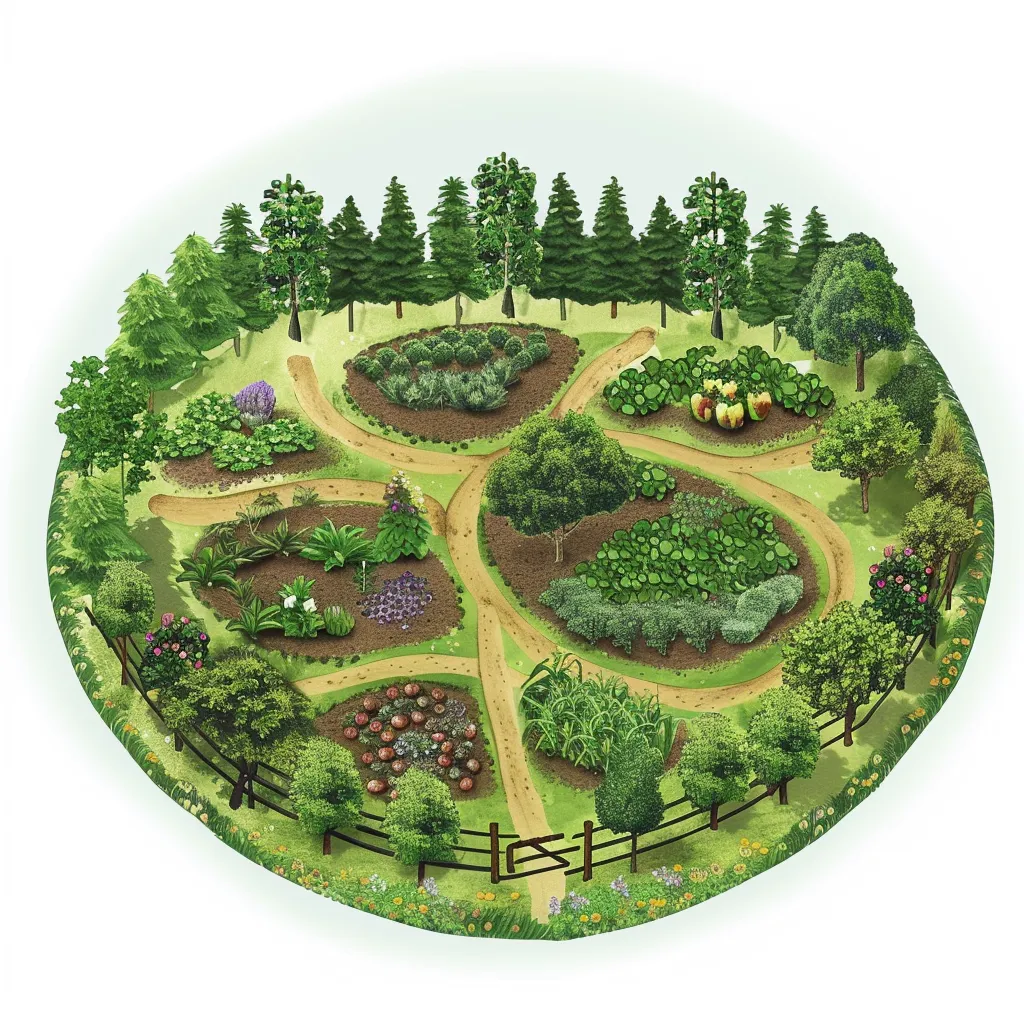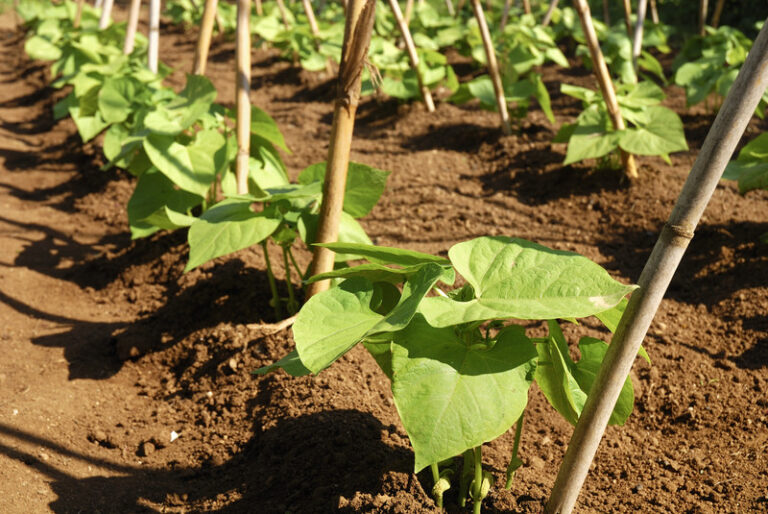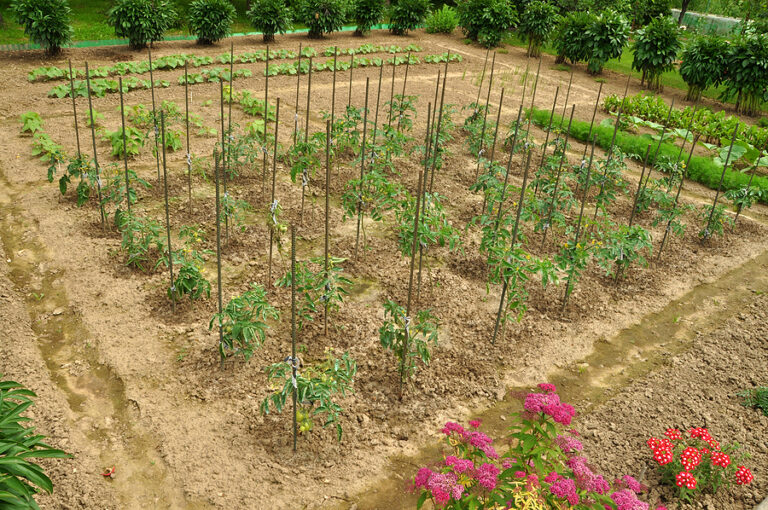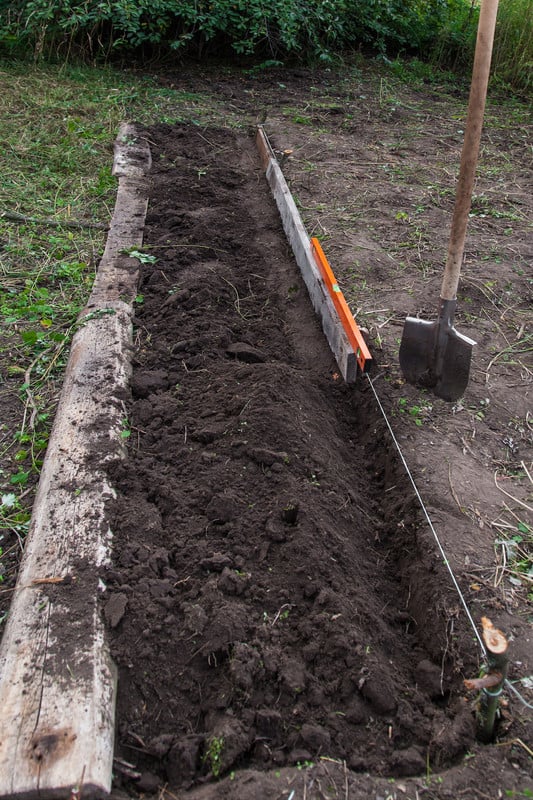How to Create Home Garden Food Forest
A food forest is a diverse and layered garden designed to mimic the structure and function of a natural woodland ecosystem, where every plant has a role in creating a sustainable, self-sufficient landscape. It typically includes multiple layers of vegetation, such as tall fruit and nut trees, smaller trees or shrubs, herbaceous plants, ground covers, root crops, and climbing vines. Each layer works together to form a balanced ecosystem that produces food and other resources, conserves water, improves soil health, and supports wildlife. The goal of a food forest is to create a resilient garden that requires minimal maintenance while providing a continuous harvest of fruits, nuts, vegetables, and herbs.
In a food forest, the emphasis is on biodiversity and natural processes, with plants chosen not just for their yields but also for their ability to enrich the soil, attract beneficial insects, and support the growth of other plants. The use of organic mulches, compost, and natural pest control methods helps to maintain the health and fertility of the system. As a result, a food forest not only offers an abundance of food but also enhances the surrounding environment by creating a thriving, interconnected ecosystem that resembles a natural forest in its structure and function. This approach makes food forests an appealing and sustainable gardening practice for home gardeners seeking to grow their own food in harmony with nature.

Can You Grow a Food Forest in a Home Garden?
A food forest can definitely be grown in a home garden, even in small urban spaces. The key is to scale the design to fit the available area while maintaining the layered structure found in larger food forests. Here’s how you can grow one at home:
Seven Steps to Create a Home Garden Food Forest
- Assess Your Space and Plan the Layers
- Evaluate your space, sunlight, soil type, and water availability. Even a small garden can accommodate a mini food forest.
- Plan for seven layers of vegetation, including:
- Canopy Layer: Fruit or nut trees (e.g., dwarf apple or peach trees).
- Low-Tree Layer: Smaller fruit trees or shrubs (e.g., hazelnut, fig).
- Shrub Layer: Berry bushes (e.g., blueberries, currants).
- Herbaceous Layer: Herbs and vegetables (e.g., rosemary, mint, chives).
- Ground Cover Layer: Low-growing plants (e.g., strawberries, clover).
- Rhizosphere (Root Layer): Edible root crops (e.g., garlic, onions).
- Climbing/Vine Layer: Climbing plants (e.g., grapevines, kiwi).
- Choose Plant Varieties Suitable for Your Climate
- Select drought-tolerant or hardy species suited to your local climate. Native and adapted plants will thrive better with minimal care.
- Mix annuals and perennials for continuous yields and plant different varieties to increase biodiversity.
- Layer Plants to Maximize Space and Light
- Arrange plants in layers, with taller trees providing partial shade for shade-tolerant plants below.
- Space trees and shrubs to ensure that each layer gets enough light and airflow.
- Improve Soil Health
- Amend soil with organic matter, such as compost or aged manure, to create rich, fertile ground.
- Use mulch to suppress weeds, retain moisture, and enrich the soil as it decomposes.
- Establish Watering Systems
- Set up a rainwater collection system or use swales and drip irrigation to keep the garden well-watered.
- Implement mulching and ground covers to conserve moisture.
- Encourage Biodiversity and Natural Pest Control
- Plant a variety of species to attract beneficial insects, birds, and pollinators.
- Avoid chemical pesticides and fertilizers, and use natural pest control methods (e.g., companion planting or neem oil).
- Maintain and Evolve the System
- Prune plants to maintain shape, improve airflow, and encourage new growth.
- Add or replace plants over time as needed to fill gaps or enhance diversity.
A home garden food forest not only provides food but also supports wildlife, improves soil, and contributes to a more sustainable lifestyle. Even small-scale food forests can make a big impact by transforming a typical garden into a thriving, edible ecosystem.
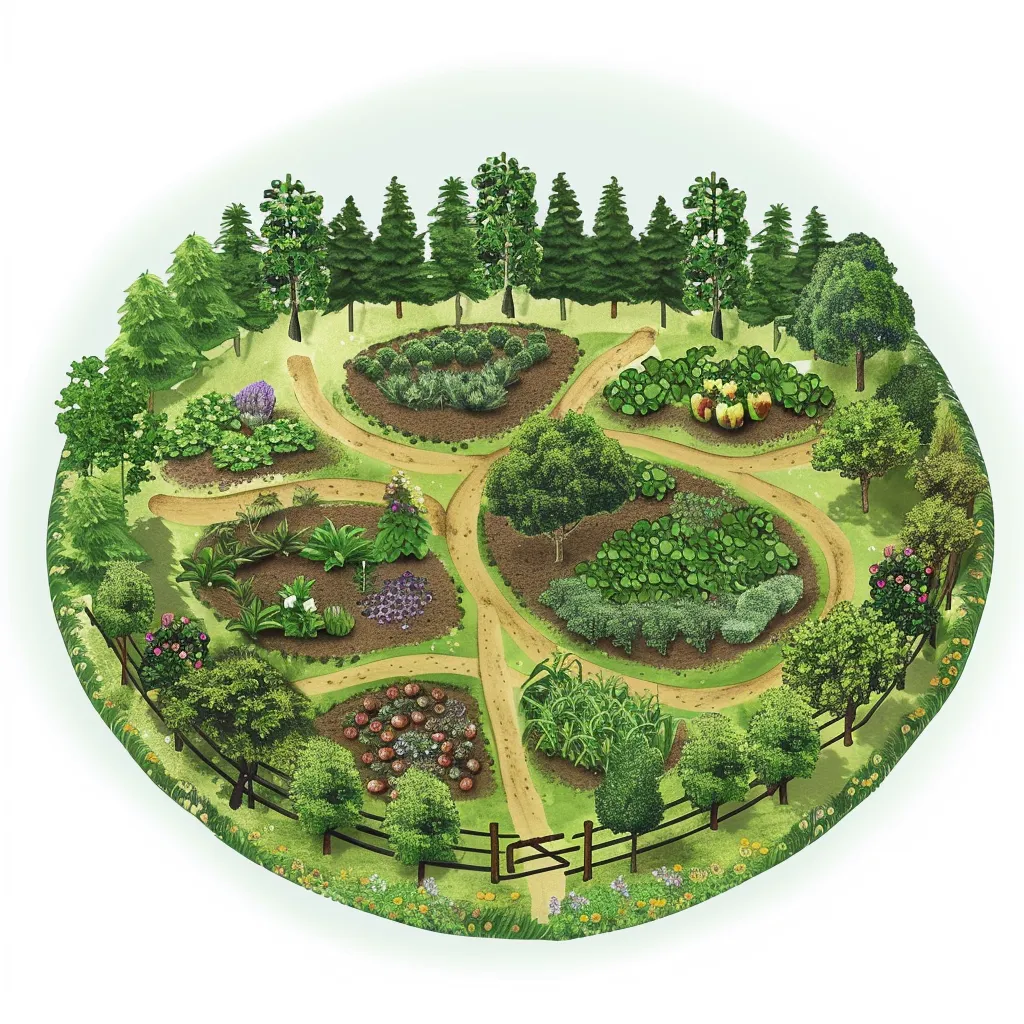
Brief History of the Food Forest Concept
A food forest is a diverse, self-sustaining garden designed to mimic a natural woodland ecosystem, where various layers of plants work together to create a balanced and productive landscape. It typically includes a mix of fruit and nut trees, shrubs, herbs, vines, and ground covers, all providing edible or useful yields. The goal is to create a resilient ecosystem that requires minimal maintenance, promotes biodiversity, conserves water, and improves soil health.
The concept of the food forest has roots in ancient agricultural practices and traditional land management systems, which have been used for thousands of years by indigenous cultures worldwide. These traditional practices involved cultivating diverse, multi-layered gardens that mimicked natural forests, providing a variety of food, medicinal plants, and other resources. For instance, in tropical regions like Southeast Asia, Africa, and Mesoamerica, indigenous communities practiced agroforestry techniques that combined trees, shrubs, and ground-level crops to create sustainable and resilient food production systems. Such practices emphasized working with nature, nurturing biodiversity, and maintaining soil fertility, long before modern agricultural methods emerged.
The modern food forest concept was further developed and popularized in the 1970s through the permaculture movement, founded by Bill Mollison and David Holmgren. They recognized the value of traditional agroforestry practices and incorporated these ideas into permaculture design principles. The goal was to create self-sustaining, regenerative landscapes that function like natural ecosystems, where each plant has a role in the overall health of the system. As permaculture gained global recognition, the food forest approach was embraced by gardeners, farmers, and environmentalists seeking sustainable alternatives to industrial agriculture. Today, food forests continue to evolve, blending ancient wisdom with modern ecological understanding to promote a sustainable and resilient way of growing food.
Regenerative Gardening Learning Hub
🌿 Start here: The Complete Guide to Regenerative Gardening and Farming
1️⃣ Soil Health and Living Systems
- How to Build Living Soil: A Step-by-Step Guide
- Understanding the Soil Food Web: Life Beneath Our Feet
- How to Use Compost and Vermicompost in a Regenerative Garden
- Mulching for Soil Health: How to Protect and Feed the Soil Naturally
- Using Mycorrhizal Fungi to Boost Plant Health and Yield
- Minimal Tillage: Why and How to Disturb the Soil Less
- How to Test, Read, and Rebalance Your Soil Naturally
2️⃣ Biodiversity and Polyculture
- How to Design Polycultures and Companion Plantings for Regenerative Gardens
- Integrating Native Plants into Your Food Garden
- Creating Habitat for Beneficial Insects and Pollinators
- Cover Cropping for Biodiversity and Soil Regeneration
- Crop Rotation for Soil Fertility and Pest Management
3️⃣ Carbon Sequestration and Organic Matter
- Why Capturing Carbon in the Garden Is Important and Fights Climate Change
- Increasing Soil Carbon with Compost, Mulch, and Deep Roots
- Biochar: What It Is and How to Use It in the Garden
- How to Keep Soil Covered Year-Round to Build Carbon and Fertility
4️⃣ Water Stewardship
- How to Use Water Wisely: The Principles of Water-Wise Regenerative Gardening
- Building Swales and Contour Beds to Slow and Sink Rainwater
- Mulch, Groundcovers, and Soil Structure for Water Retention
- Harvesting Rainwater for Regenerative Gardens
5️⃣ Perennial Crops and Permanent Systems
- How to Transition from Annuals to Perennials in the Vegetable Garden
- Perennial Vegetables for Regenerative Systems
- Agroforestry and Food Forest Basics for Gardeners
- Integrating Fruit Trees and Shrubs into the Vegetable Garden
6️⃣ Animal Integration
- Chickens in the Garden: How to Use Them Regeneratively
- Using Worms and Bees as Regenerative Allies
- The Role of Animals in Closing the Nutrient Loop
7️⃣ Human and Community Connection
- The Ethics of Regenerative Gardening: Care for Earth, People, and Future Generations
- How to Build a Community Garden Using Regenerative Principles
- Teaching Regenerative Gardening to Children and Beginners
- Healing the Land and Ourselves: The Psychology of Regenerative Practice
8️⃣ Regenerative Design and Planning
- How to Plan a Regenerative Garden from the Ground Up
- Regenerative Gardening Principles Simplified for the Home Gardener
- Home Garden Permaculture
- How to Create a Home Food Forest
- French Intensive Gardening
- Square Foot Gardening
- Zone and Sector Planning for Small Regenerative Gardens
- Using Observation and Feedback to Improve Your System Each Season
9️⃣ Inputs and Outputs: Closing the Loop
- How to Make and Use Compost Tea and Fermented Plant Extracts
- Zero Waste Gardening: How to Cycle Nutrients and Minimize Inputs
- How to Build a Closed-Loop Garden System
10️⃣ Case Studies and Personal Experience
- Before and After: Transforming a Conventional Bed into a Regenerative System
- Seasonal Journal: Observing Regeneration in a Year-Round Garden
Related Articles:

